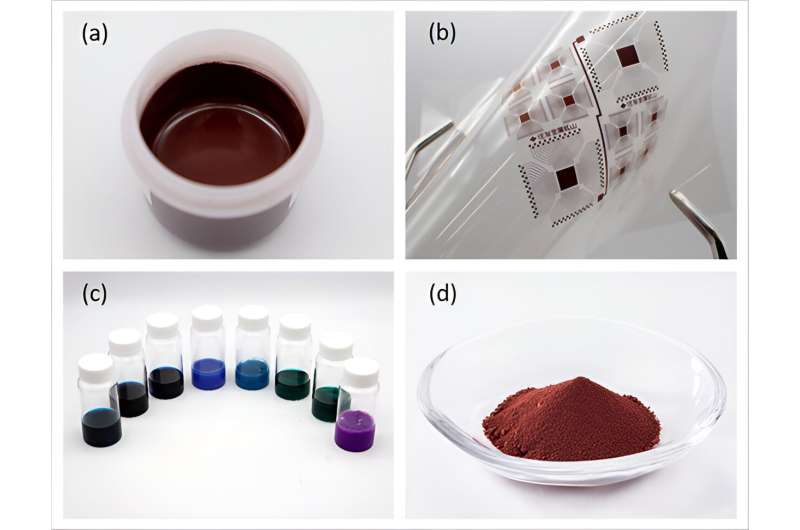This article has been reviewed according to Science X's editorial process and policies. Editors have highlighted the following attributes while ensuring the content's credibility:
fact-checked
trusted source
proofread
Thick-film conductive ink suitable for large-area, large-current printed electronics

A thick-film, electrically conductive ink suitable for printing electronic circuits and sensors on the surfaces of films and other substrates to manufacture printed electronics has been jointly developed by NIMS, Sumitomo Metal Mining Co., Ltd. (based in Minato City, Tokyo), N.E. CHEMCAT CORPORATION (based in Minato City, Tokyo) and Priways Co., Ltd. (a NIMS-founded startup based in Tsukuba, Ibaraki).
Printed electronics are manufactured using additive methods (i.e., electronic circuits are directly printed on the surfaces of substrates) rather than conventional subtractive electronics manufacturing (i.e., metallic films are first deposited on substrate surfaces and unnecessary film regions are then removed to form circuits).
The additive method uses less metallic materials than the subtractive method, making it more environmentally friendly and inexpensive. In addition, the additive method can be used to print electronic circuits on the surfaces not only of rigid substrates but also flexible ones. Because of these advantages, the additive method is expected to serve as an effective wiring technique for use in next-generation device fabrication.
The new thick-film conductive ink was created using metal complex inks (i.e., inks consisting of a central metallic ion surrounded by charged molecular ligands) developed by NIMS and Priways and metallic powder synthesis and paste production technologies developed by Sumitomo Metal Mining.
This ink is able to meet printed electronics requirements: its thickness is controllable and it is compatible with low-temperature sintering. These improvements were achieved by adding copper particles developed by Sumitomo Metal Mining to the ink, enabling it to form thick-film wiring at about 200°C on the surfaces of heat-resistant plastic films.
The details of the technology have been published in the journal Applied Surface Science.
The newly developed ink is more inexpensive to synthesize and more oxidation-resistant than conventional conductive inks. In addition, the thickness of the ink film can be more than three times larger than that of conventional ink films, making it suitable for use in large-current, large-area electronic products.
The research team is currently developing techniques for mass-producing this ink by leveraging N.E. CHEMCAT's expertise in metal complex development and production. The team plans to further improve the performance of the ink and identify other applications for it.
More information: Wanli Li et al, Printing flexible Cu–Ni traces with high conductivity and high thermal stability by in-situ formed multiscale core–shell structures in inks, Applied Surface Science (2023). DOI: 10.1016/j.apsusc.2023.158967




















